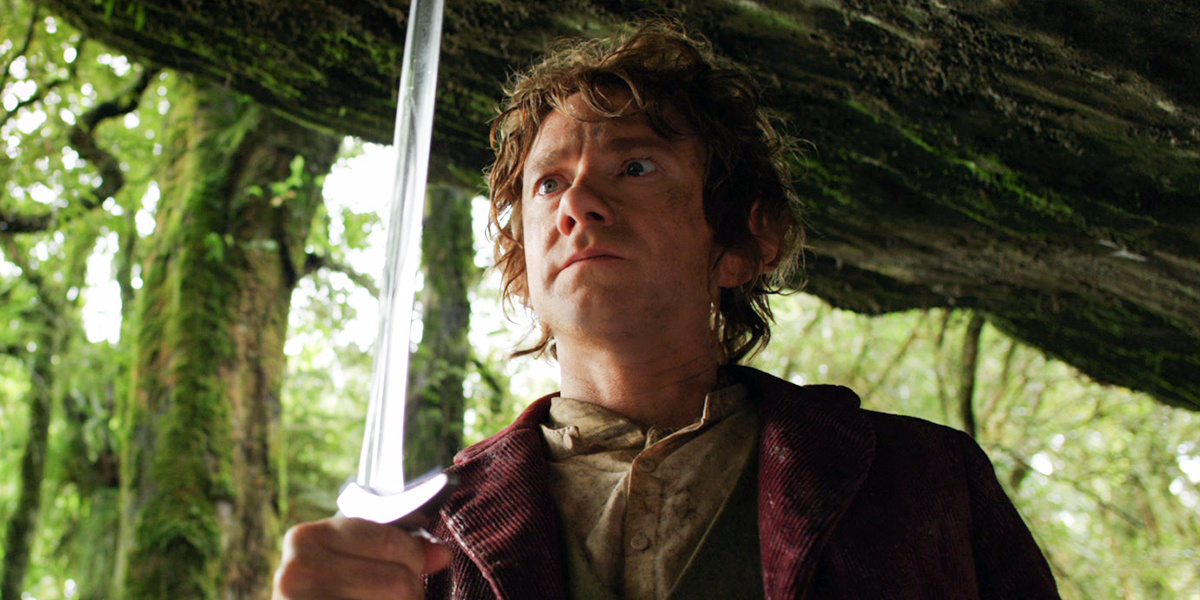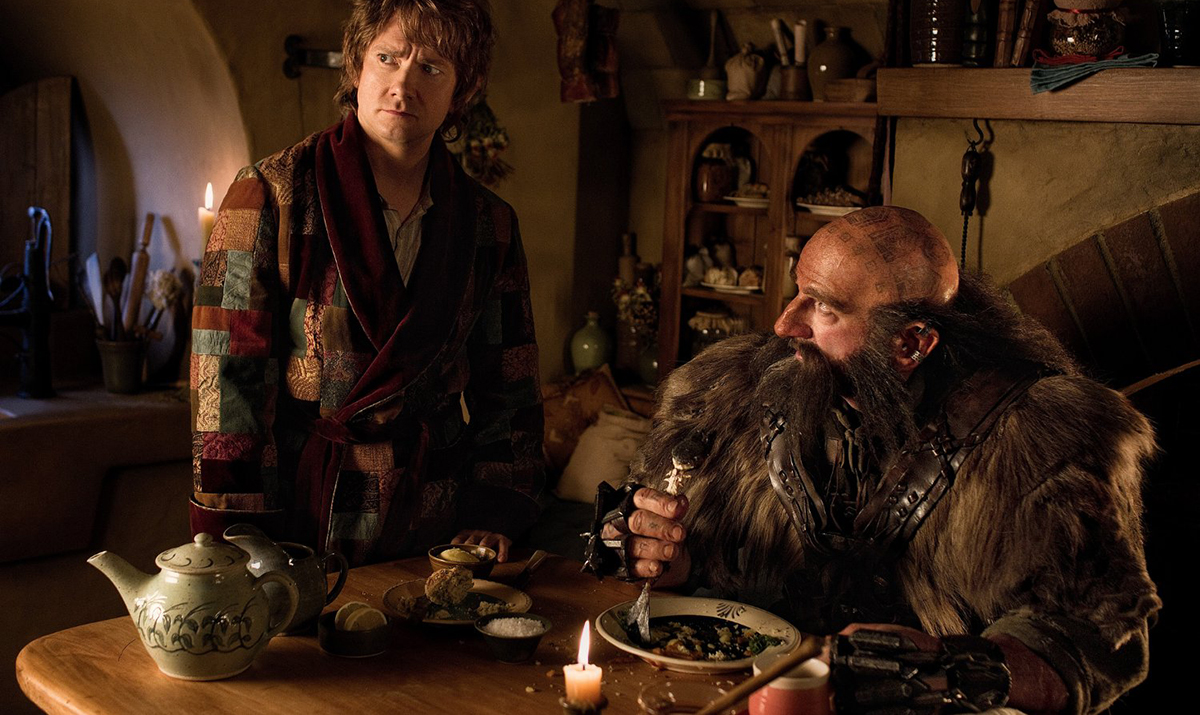J.R.R. Tolkien’s rollicking adventure story, with faith at its center, continues to delight millions.
Lenten Campaign 2025
This content is free of charge, as are all our articles.
Support us with a donation that is tax-deductible and enable us to continue to reach millions of readers.
In one sense, Bilbo Baggins’ adventures began with an unexpected party: A bevy of dwarves arrive at Bilbo’s house at Bag End, seemingly unannounced, and ask this plump, quiet hobbit to go on a desperate dangerous trek to Lonely Mountain and face a dragon.
In another sense, however, Bilbo’s journey began September 21, 1937, when J.R.R. Tolkien’s classic children’s book The Hobbit was published by George Allen & Unwin. The words were Tolkien’s, of course. The illustrations were his, too. Why, even the cover jacket was Tolkien’s design. Just 1,500 copies of the book were printed.

Read more:
Read a rare, unedited translation of Jonah by J.R.R. Tolkien
In the 80 years since, The Hobbit has never been out of print. The unassuming, stand-alone children’s book went on to serve as a prelude to Tolkien’s ambitious fantasy epic The Lord of the Rings, which in turn has inspired and influenced all of modern fantasy. The Hobbit helped turn Tolkien — a professor at Oxford University — into a literary rock star. But even as Tolkien grew ever more famous and his works attracted an ever wider and ever-more diverse, body of readers, the writer was only concerned with an audience of one.
“The only just literary critic is Christ, who admires more than does any man the gifts He Himself has bestowed,” he once wrote.
Tolkien’s father (Arthur) died when he was just 3, and his mother, Mabel, converted to Roman Catholicism in 1900, when Tolkien was about 8 years old. The conversion shocked Mabel’s Protestant family and they essentially disowned her, cutting her off from the family finances. She died just four years later of diabetes. According to Christianity Today, she might’ve survived had she had the money to fight the disease. Instead, Tolkien says that she “died in youth of a disease hastened by the persecution of her faith.”
But Tolkien never departed from that faith. According to author Devin Brown (in an interview with CBN), the writer “was very pious, went to church not just every Sunday, but often every day. He was one of those kind of people that I don’t know that very many of them exist anymore.”
It’s only natural that Tolkien’s faith would filter into his works — even though his most famous books take place in a world completely apart from ours. Jesus is never mentioned, nor is the Church. But look carefully, and Tolkien’s opus The Lord of the Rings is saturated in a Christian understanding of reality — a world filled with light and dark and, in its own way, angels and demons.

Read more:
The secret love story behind J.R.R. Tolkien’s romantic characters in ‘The Lord of the Rings’
The Hobbit is a different sort of book, of course — one meant to be a rollicking adventure story for children. It began simply enough: Tolkien famously was grading papers at Oxford when he came across a blank page and, on a whim, he simply wrote, “In a hole in the ground there lived a hobbit.” While close friend C.S. Lewis always meant for his Chronicles of Narnia stories to point to Christianity, Tolkien’s initial ambitions for his own fantasy world were, perhaps, not quite so explicit.
And yet, even The Hobbit reflects faith — even if it does so dimly — in some resonant ways. And you don’t need to read far to see it. In fact, we see it in the book’s very first chapter.
Consider Bilbo, the hobbit. He likes good food, smoking his pipe, and hates to travel. He’s as unheroic a hero as you’re likely to find. He calls adventures “Nasty disturbing uncomfortable things! Make you late for dinner!”

I’ve always thought of Bilbo as being a little like one of my grandmothers — short, plump, gossipy — a wonderful woman, but not exactly the sort of person you’d trust in a knife fight.
But for some reason, Gandalf, the book’s powerful and enigmatic wizard, swoops into town and invites Bilbo to take part in this crazy, daring and gigantically dangerous mission.
The dwarves, led by the haughty Thorin Oakenshield, doubt whether Bilbo’s up to the task. And frankly, Bilbo would agree with them.

Read more:
Did you know Tolkien’s dwarves were derived from Norse mythology?
But Gandalf insists that Bilbo’s the right guy — er, hobbit — for the job. “There’s a lot more in him than you guess, and a deal more than he has any idea of himself.”
And you know what? Gandalf’s right.
Bilbo doesn’t remind me just of my grandma: He reminds me of practically every biblical hero called by God to do incredible things. Moses was an outcast with some sort of speech difficulty. David was a shepherd. Jesus’ disciples were regular ol’ Joes. None were marked for greatness. Some, like Bilbo, wished that God would leave them alone. Adventures make you late for dinner.

But God calls them anyway. And eventually, like Bilbo, they accept God’s call. They sign the contract, go out their front doors and realize they were made for more.
Just like Bilbo. Just like us, really.
I like what Brown told CBN about that:
“Bilbo’s story is one thread in a great tapestry, just like all of ours. It’s not something we’re living on our own, and the fact that it’s a thread in a tapestry, actually makes history I think more magnificent, just like our story. Without us, the tapestry’s not complete. We have our own special part to play, and our story is part of a larger story, and without us, that story can’t be written.”
For 80 years, The Hobbit has charmed its readers because it’s a riveting, rollicking adventure story — one that takes place in a purely fictional, fantastical world. And yet within that fiction, we can find truth. We find beauty. And if we look in the right places, we can even find God.








